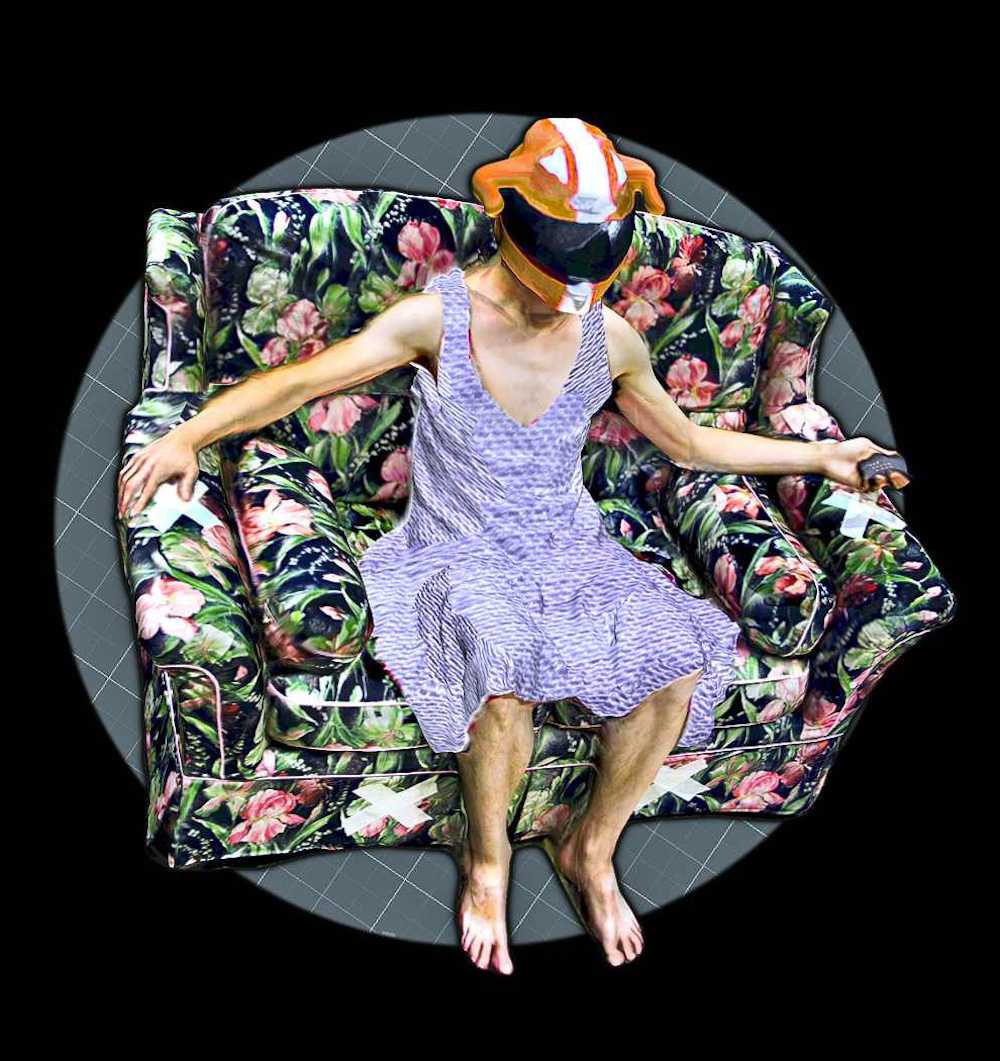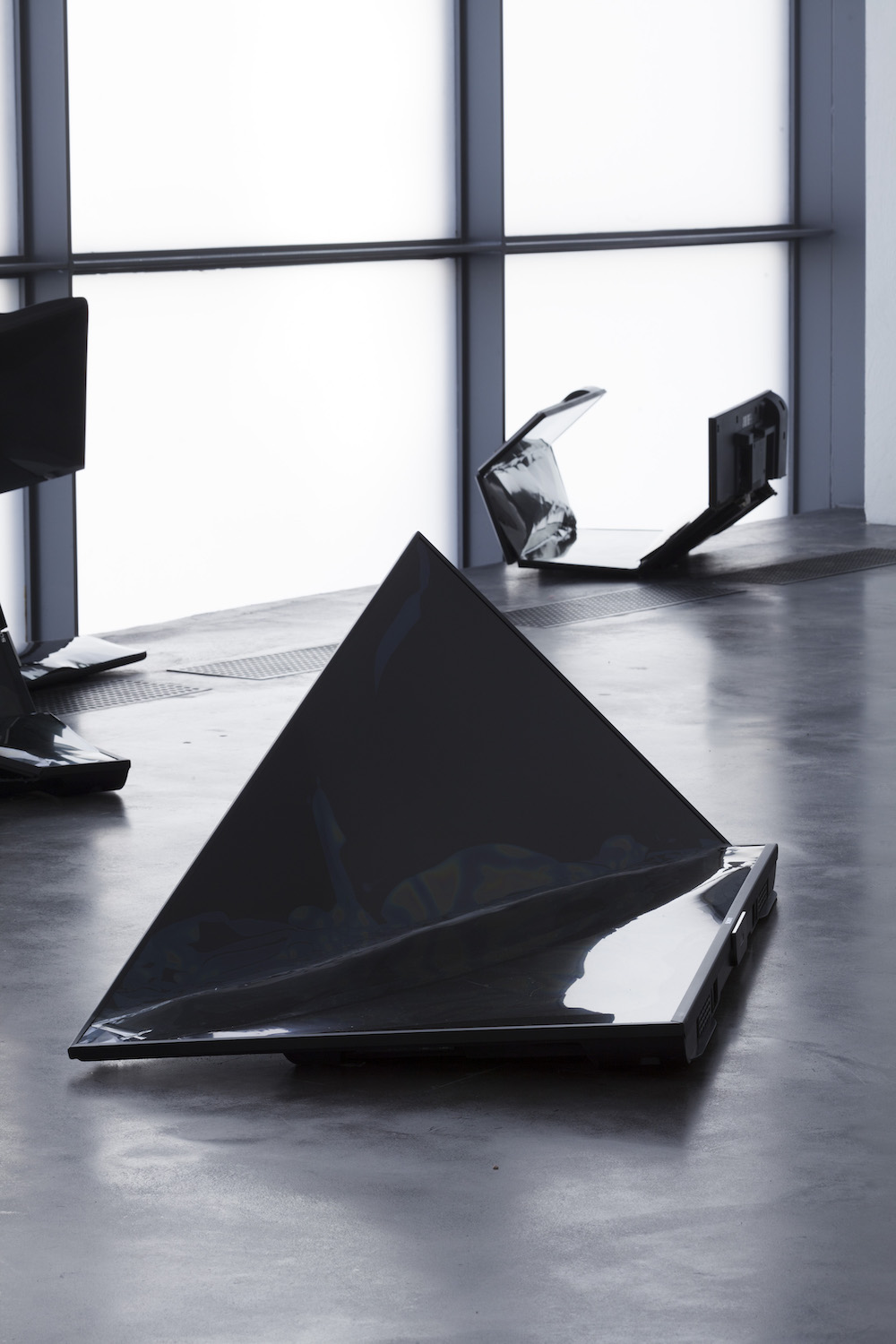
Recently I was in Finland to take part in the LIWRE international literary festival as a poet. At this time of year, Finland is a land of midnight sun. With a few days to spare in Helsinki, I decided to check out the contemporary scene. As an art critic, as well as a poet, I’m like a homing pigeon when it comes to new cities. Find my way to a gallery and I feel instantly in familiar territory. So I headed for the Museum of Contemporary Art Kiasma where, by chance, they were hosting ARS17 Hello World! Windows to the Future, which celebrates the hundredth anniversary of Finnish independence (Finland, a small nation of some five million people, has been part of both Sweden and Russia). The ARS exhibitions are a series of international contemporary art shows that have taken place in Finland since 1961. ARS17 is the ninth in the series and the fourth to be held at the Museum of Contemporary Art Kiasma. The building itself is striking. The result of an architectural design competition held in 1992 and won by the American Steven Holl.
Dedicated to exploring the digital present, the exhibition also looks to the future with an exploration of state-of-the-art technology, images from the internet, and digital games. There are artists from thirteen different countries and three generations, from the children of the sixties to millennials born in the eighties who, unlike their older counterparts, have grown up in a burgeoning digital world and for whom the physical and virtual seem to merge quite naturally into a single reality. As I belong to the first age group, I experienced a good deal of what was on show with a sense of angst, as if I was seeing through a porthole into a post-human world. It might well depend on your age as to whether you experience this exhibition as an exciting vision of a techn-utopia or some sort of nightmarish dystopian hell.
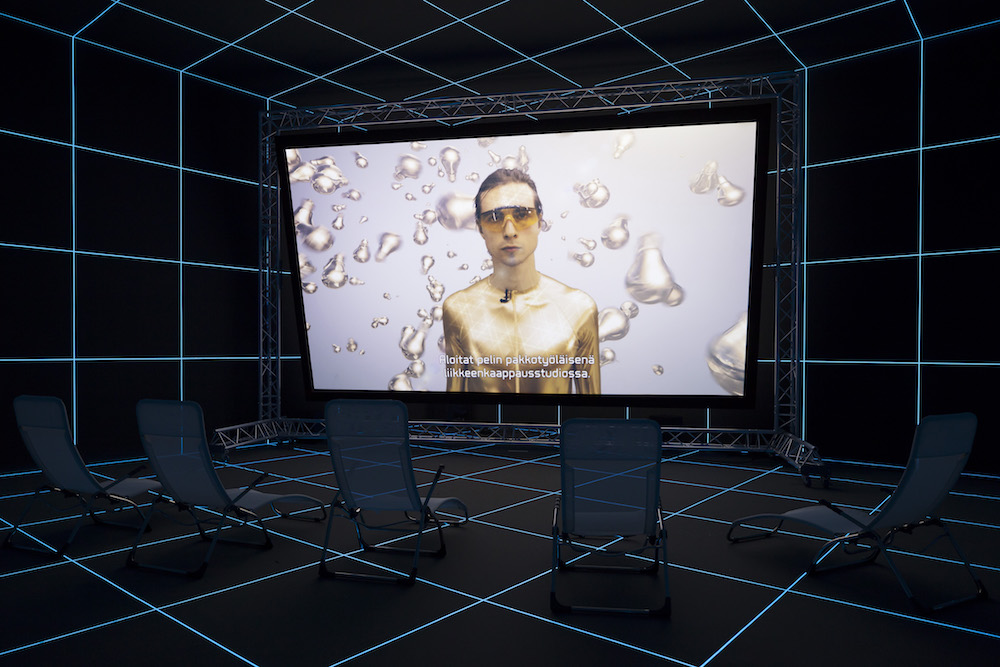
Hito Steyerl, Factory of the Sun, 2015. Courtesy of the artist and Andrew Kreps Gallery, New York. Photo: Finnish National Gallery / Pirje Mykkänen
We live in an age permeated by the digital. Just how much so we are made aware when we walk into this exhibition. In our Western consumer society the digital revolution has infiltrated and shaped our relationships on social media, as well as the way we buy and consume, find sexual partners, or learn about politics. Many individuals even develop identities that are entirely technology driven. What this exhibition does then, whether we like it or not, is capture the mood and cultural practices of the early twenty-first century by emphasising how the digital is embedded, in ways to which we’re often oblivious, in the objects, images, and structures that we encounter on a daily basis. In his 2013 book PRESENT SHOCK: When Everything Happens Now, Douglas Rushkoff argues that we no longer have a sense of a future, of goals, or a direction because we seem to be living in a constant now. Life is but one click away. This is underlined by Nina Canell’s sculptures and installations where the cut wires of internet circuitry are displayed like archaeological fragments on traditional white plinths, reminding us that today’s technology becomes tomorrow’s obsolescence. These surprisingly beautiful aborted bits of technology seem to suggest a departure from the word, from logos, from the forms of communication that have hitherto been associated with human interaction.
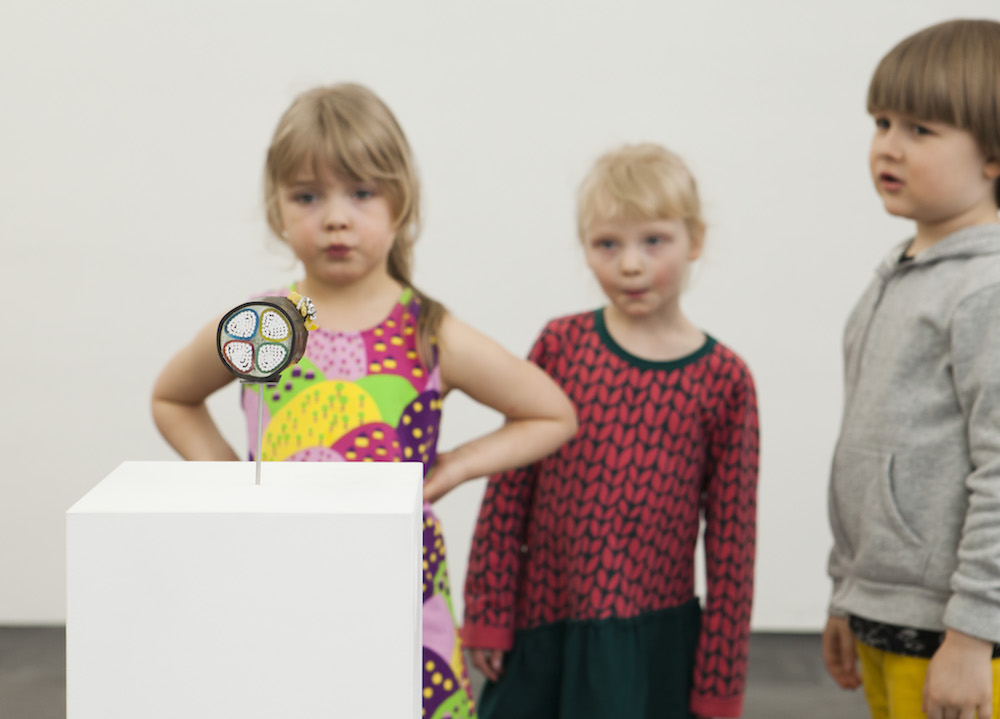
Nina Canell, Brief Syllables / Thin Vowels, 2014. Courtesy Galerie Barbara Wien, Berlin; Daniel Marzona, Berlin & mother’s tankstation. Photo: Finnish National Gallery / Pirje Mykkänen
Elsewhere the artist Julia Varela litters the gallery floor with broken, bent, and distorted plasma screens, which she describes as “an act or resistance”, a “hijacking”. Lying contorted and twisted they seem to evoke the end of something, as Joseph Beuys’s iconic work once signalled the End of the 20th Century. This detritus, only very recently used to do something–transmit information, news, and entertainment–is now presented as redundant, a collection of mediaeval relics as technology moves on its inexorable course.
Cécile B Evans, Jacolby Satterwhite and Hito Steyerl’s visual language graphically encapsulates the atmosphere of today’s digital ubiquity. Satterwhite’s works that fuse video, 3D animation, drawing, and performance explore the history and the future of the relationships between different media. While Cécile B Evans’s avatars, dancing in server farms where memories have become detached from human individuals, create a spine-chilling dystopian vision. In Factory of the Sun (2015) and The Tower (2015), Hito Steyerl fuses documentary footage with video games and speculative fictions to expose the aesthetics and politics of digital capitalisation. Ryan Trecartin’s video Temple Time (2016)—the artist likes to refer to his works as “movies”–has characters who explore an eerie empty building, talking about what they see rather than what they feel, to create flat one-dimensional identities, more comic-strip video construct than human.
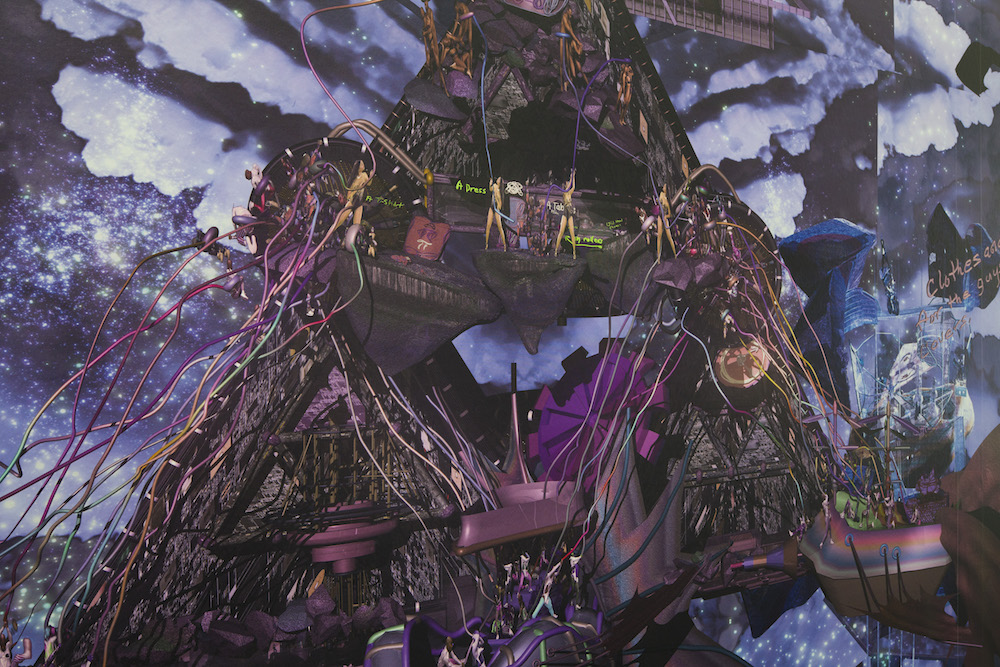
Art has always posed questions and forced us to face uncomfortable verities, challenged the status quo, and smashed existing categories to question who and what we are. This new digital art explores the intersections between the personal and the corporate, along with ideas that surround personal identity as it exists within both actual and virtual physical space.
Among the four floors of images there is one that has stayed with me, one that made me feel truly uncomfortable: Charles Richardson’s Headbone (2015). In front of a homely floral sofa floating on the screen is a 3D photo-scanned image of two hyperreal male figures twirling in space. One is seated on the sofa dressed in a woman’s sundress. The other, a legless torso, slowly spins to reflect the male figure cradling both a pregnant belly and a mobile phone. His arms and stomach appear completely realistic, the skin white and covered with fine hairs. His head and upper body are wrapped in African fabrics and taped with a strange array of detritus, from gardening gloves to Elastoplast and felt-tip pens. Dangling down his naked back is a cheap 1950s diamond paste necklace. But what is so uncanny is that as the figure turns and pivots we can see right through its centre into an empty void. It’s completely hollow despite its admittedly bizarre lifelike appearance. This apparently “real” gender-bending figure not only subverts received notions of masculinity but seems to question whether an actual sentient individual will, in future, be the source of procreation, whether such a thing as a flesh and blood human will even exist. This might be exciting if you’re under twenty-five. But I found it terrifying.
Please stop the world. I want to get off.
